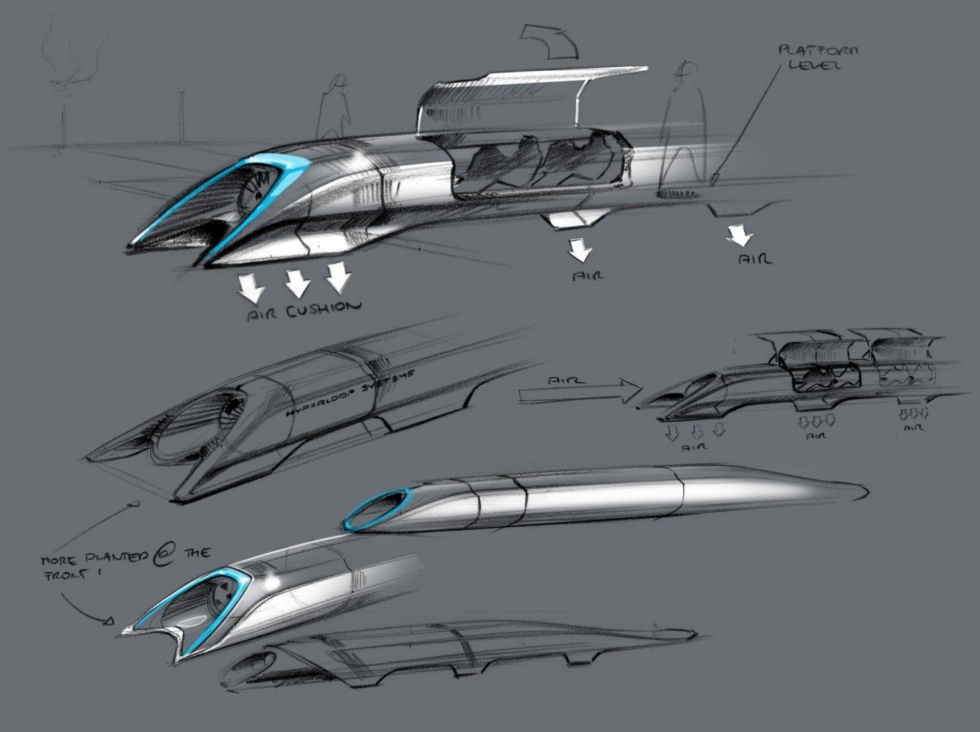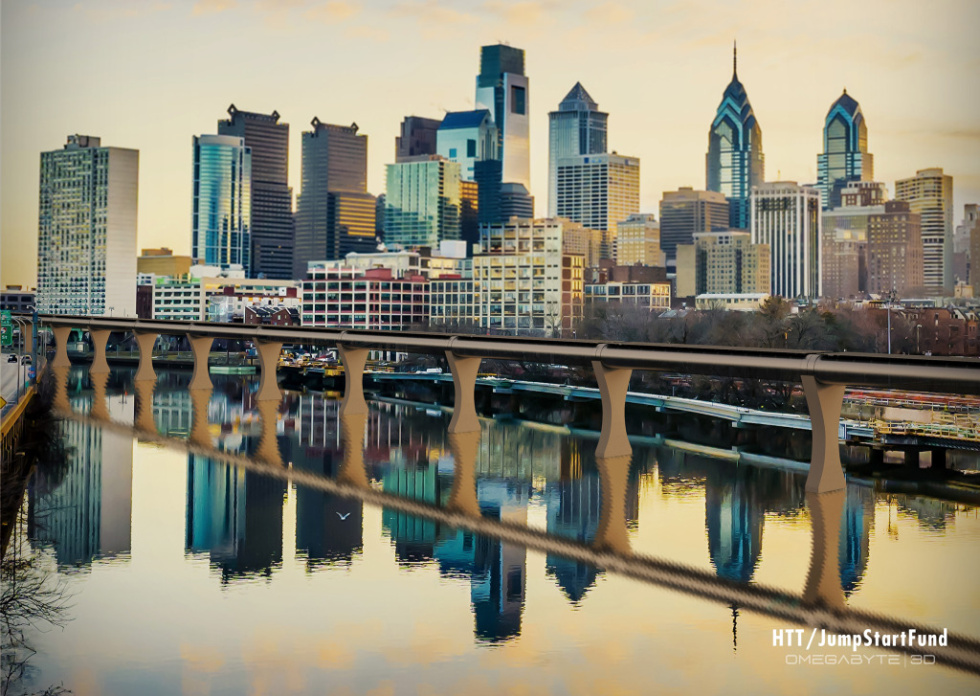-
Hyperloop concept art from HTT.
-
HTT's proposed test track in Quay Valley.
-
Musk's original Hyperloop sketch.
-
-
Hyperloop pod design concept, by UCLA's AUD group.
-
More Hyperloop concept art by UCLA's AUD studio.
-
More Hyperloop concept art by UCLA's AUD studio.
-
More Hyperloop concept art by UCLA's AUD studio.
-
More Hyperloop concept art by UCLA's AUD studio.
-
Hyperloop concept art (Philadelphia).
-
HTT's proposed network of Hyperloop tracks.
It beggars belief, but it appears that Elon Musk's Hyperloop is actually going to be built. The first test track will only be five miles long, and it won't operate at the supersonic speeds that Musk envisioned, but still, it's coming—Musk's "cross between a Concorde, railgun, and an air hockey table" really is coming.
Back in January, Elon Musk said that he planned to build a Hyperloop test track "soon" and that Texas was "the leading candidate." Curiously, nothing more has been said by Musk on the matter since. Then, in February, Hyperloop Transport Technologies (HTT)—an organisation that is unaffiliated with Musk—said that it had struck a deal to build a five-mile Hyperloop in California.
HTT is a research company that was founded soon after Musk's original Hyperloop thesis was published in 2013. The structure of HTT is somewhat interesting: it has employees, but it also uses crowdsourced engineering talent from across the US that is being paid in stock options. The CEO is a guy called Dirk Ahlborn, who founded JumpStartFund—an online platform that facilitates with building crowd-powered projects; basically, he took his own service and used it to build HTT.
Back in February, HTT said that it would attempt to raise $100 million through an initial public offering to fund construction of the five-mile (8km) test track. Agreements have been secured for a test track to be built near Quay Valley in California, in between San Francisco and Los Angeles. Construction is scheduled to begin in 2016 and complete in 2017.

A Hyperloop track consists of two tubes, affixed to above-ground pylons. Inside the tubes are pods, which can contain humans, livestock, cargo, etc. The tubes are partially evacuated by vacuum pumps, which in turn reduces drag and allows the pods to move at high speeds without consuming too much energy. (Elon Musk suggested that the power requirements would be so low that the Hyperloop could be powered by solar panels on the topside of the tube, though it's unlikely that HTT will go that way with the test track.)
Propulsion is provided via linear induction: magnets on the outside of the pod and the inside of the tube repel each other, pushing the pod forward. (That's the railgun bit.) To reduce rolling resistance, each pod has an air compressor that takes air from the front and ejects it through holes in the bottom. (That's the air hockey table bit.) For more technical details, see our original story on Musk's Hyperloop proposal.
Speaking to National Geographic, Ahlborn gave a few more details about HTT's deployment of Musk's Hyperloop tech. There will be a variety of different pods, travelling at speeds ranging from 200 to 300 miles per hour (320 to 480 km/h). “Maybe in one capsule, people would like to feel the speed a bit more and then for the 80-year-old, it’s a little softer and slower," Ahlborn said.

These speeds are far short of Musk's proposed 760mph, of course, but still a lot faster than existing US railways—and really, that seems to be the main point of Hyperloop in the first place. California is currently planning to build a high-speed rail link between Los Angeles and San Francisco at a cost of around $70 billion (~£45 billion). In Musk's original thesis, he postulated that a Hyperloop run between the two cities would only cost between $6 and $10 billion. HTT says it can't quite hit Musk's estimate, but that it could do it for around $16 billion, which is still pretty good.
Obviously, big questions remain about Hyperloop. Will the pylons that carry the tubes be able to withstand California's rather large and regularly occurring earthquakes? At such high speeds, the tubes will need to follow mostly straight paths, otherwise passengers will be subjected to stomach-churning forces—and in the US, there are lots of mountains, hills, and other topological quixotics that will be hard to build around. What happens if someone shoots a hole in a partially evacuated tube, anyway?
Many of those questions will hopefully be answered by the test track, though not all. "Unfortunately for us, it’s impossible to test everything out on a small scale,” Ahlborn said to National Geographic. To test whether Hyperloop can actually go supersonic, a longer track will be needed—and that's when things start to get difficult. Raising $100 million is one thing; raising $1 billion for a relatively unknown and immature technology is another. Ahlborn said that the first long Hyperloop might be built outside the US, perhaps in Singapore or Dubai, where there's a lot of money and "less poltiics."
Following "extensive safety testing," passengers may be allowed to ride HTT's Hyperloop test track in 2018.
reader comments
204